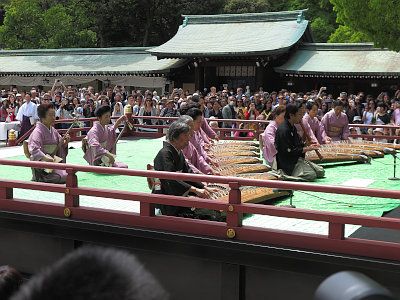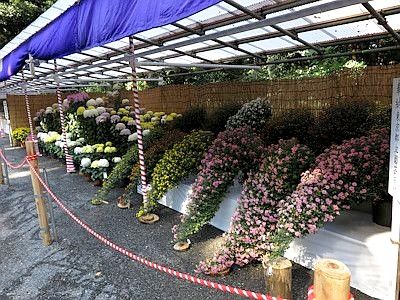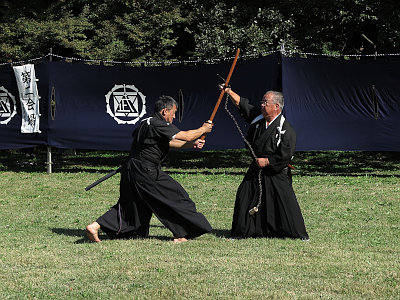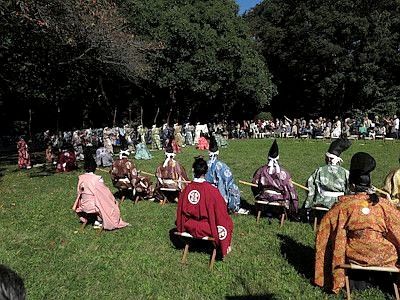 Meiji Jingu (明治神宮), located in front of JR Yamanote Line Harajuku Station or Tokyo Metro Subway Meiji Jingu-mae Station, is one of the most prestigious Shinto shrines in the whole nation. Being the largest Shinto shrine in Tokyo, it is dedicated to Emperor Meiji (1852-1912) and his wife Empress Shoken (1849-1914). For details about this shrine, see the article on Meiji Jingu Shrine.
Meiji Jingu (明治神宮), located in front of JR Yamanote Line Harajuku Station or Tokyo Metro Subway Meiji Jingu-mae Station, is one of the most prestigious Shinto shrines in the whole nation. Being the largest Shinto shrine in Tokyo, it is dedicated to Emperor Meiji (1852-1912) and his wife Empress Shoken (1849-1914). For details about this shrine, see the article on Meiji Jingu Shrine.
At this shrine, the Aki no Taisai is held from November 1st to 3rd.
Aki no Taisai at Meiji Shrine
Meiji Jingu holds a grand festival biannually - the Haru no Taisai (春の大祭) in May and the Aki no Taisai (秋の大祭) in November - but the one held in fall is larger and more important, since it is an event celebrating the birthday of Emperor Meiji enshrined at this facility. Held mainly from November 1st through 3rd, most of the notable events are held on the last day, which is a national holiday known as Bunka no Hi (Culture Day).
The Tokyo Nogyo-sai (東京都農業祭) is also held in the precincts every year from November 2 to 3.

A rite is performed on each of the three days, but on Nov 3, which is the anniversary of Emperor Meiji's birthday, an envoy from the Imperial Court attends the rite.




Bugaku, noh & kyogen, hogaku hobu, sankyoku and satsuma biwa are performed at the temporary stage set up in front of the shrine building. Of these, noh & kyogen is not allowed to take photos.

Folk performing arts will be performed in front of the second torii gate, though what will be played differs every year.


Chrysanthemum flowers will be on display along the main approach from the second torii gate. This exhibition will be a month long.

Ikebana flowers (Japanese traditional flower arragements) offered to the divinities will be displayed at the corridor.

Sake liquors, traditional sweets and specialty products dedicated to the deities from around the nation are also on display at the corridor.
Martial arts demonstration
About 60 old schools of martial arts demonstrates their skills in the northwestern part of the precincts on Nov 3 all day long (10am-4pm).




Yabusame
Perhaps the most famous event held during this festival is the yabusame also held on November 3. Yabusame is a performance which horsemen shoot arrows from running horseback. It is conducted in front of where the abovementioned martial arts demonstration is performed.




Momote-shiki
Momote-shiki is a kind of traditional archery ritual. It is held at the northeastern part of the shrine grounds on Nov 3.


Tokyo Nogyo-sai
The Tokyo Nogyo-sai, literally meaning the Tokyo Agriculture Festival, is also held on the northern grounds of the shrine every year from November 2 to 3.

Tents displaying vegetables, flowers, etc. are set up.

A fortune boat composed of vegetables is on display.

Stage performances like folk performing arts and drums will be played.
Parade of trucks decorated with vegetables and flowers
Twenty-something mini-truck decorated with vegetables and flowers make procession around the Omotesando area. After that, the vegetables and flowers will be distributed among the visitors of the shrine in front of the first torii gate.


Area guide around this siteArticle on Meiji Jingu